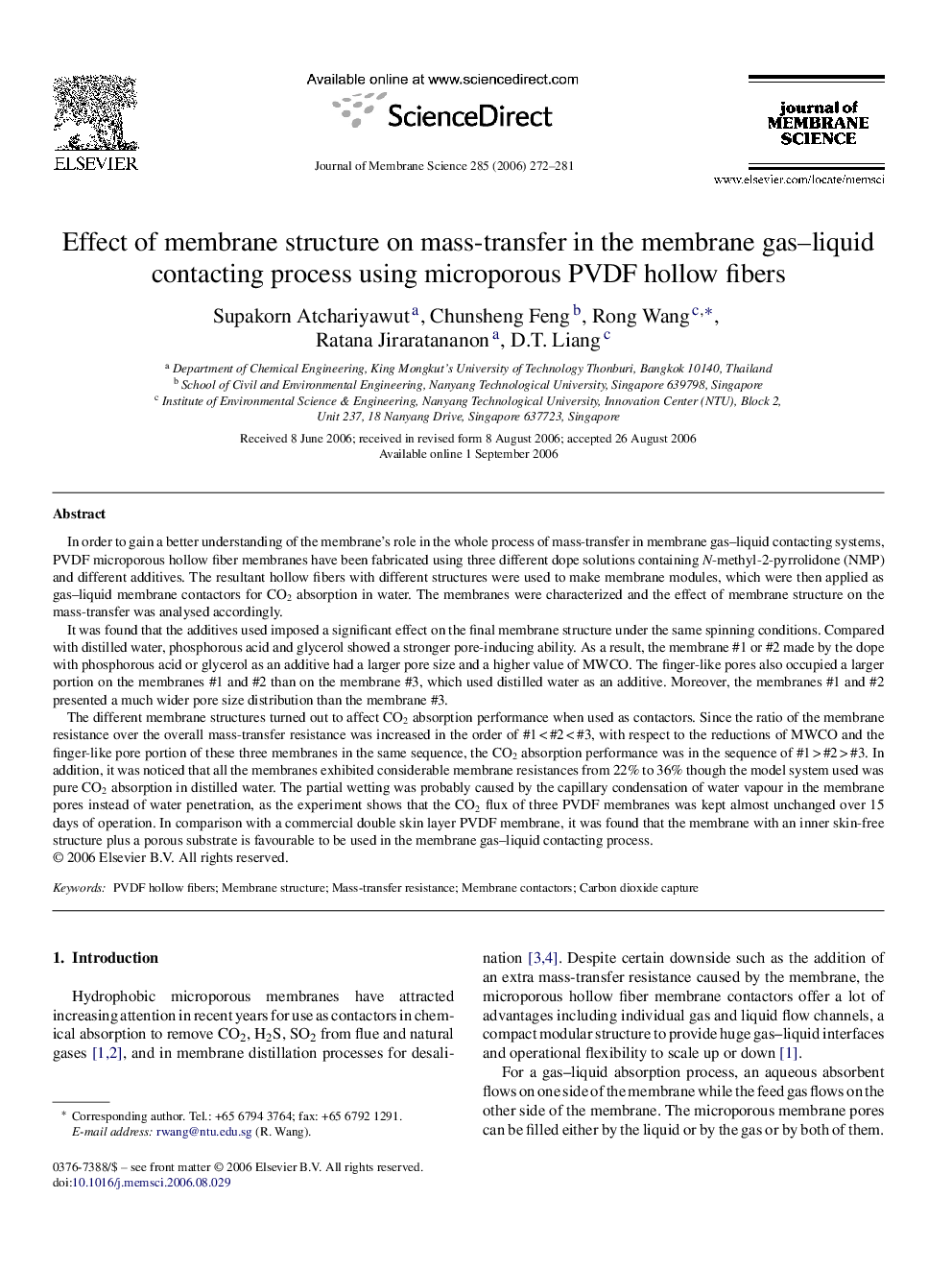| Article ID | Journal | Published Year | Pages | File Type |
|---|---|---|---|---|
| 639099 | Journal of Membrane Science | 2006 | 10 Pages |
In order to gain a better understanding of the membrane's role in the whole process of mass-transfer in membrane gas–liquid contacting systems, PVDF microporous hollow fiber membranes have been fabricated using three different dope solutions containing N-methyl-2-pyrrolidone (NMP) and different additives. The resultant hollow fibers with different structures were used to make membrane modules, which were then applied as gas–liquid membrane contactors for CO2 absorption in water. The membranes were characterized and the effect of membrane structure on the mass-transfer was analysed accordingly.It was found that the additives used imposed a significant effect on the final membrane structure under the same spinning conditions. Compared with distilled water, phosphorous acid and glycerol showed a stronger pore-inducing ability. As a result, the membrane #1 or #2 made by the dope with phosphorous acid or glycerol as an additive had a larger pore size and a higher value of MWCO. The finger-like pores also occupied a larger portion on the membranes #1 and #2 than on the membrane #3, which used distilled water as an additive. Moreover, the membranes #1 and #2 presented a much wider pore size distribution than the membrane #3.The different membrane structures turned out to affect CO2 absorption performance when used as contactors. Since the ratio of the membrane resistance over the overall mass-transfer resistance was increased in the order of #1 < #2 < #3, with respect to the reductions of MWCO and the finger-like pore portion of these three membranes in the same sequence, the CO2 absorption performance was in the sequence of #1 > #2 > #3. In addition, it was noticed that all the membranes exhibited considerable membrane resistances from 22% to 36% though the model system used was pure CO2 absorption in distilled water. The partial wetting was probably caused by the capillary condensation of water vapour in the membrane pores instead of water penetration, as the experiment shows that the CO2 flux of three PVDF membranes was kept almost unchanged over 15 days of operation. In comparison with a commercial double skin layer PVDF membrane, it was found that the membrane with an inner skin-free structure plus a porous substrate is favourable to be used in the membrane gas–liquid contacting process.
